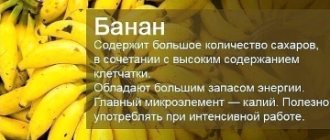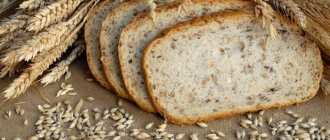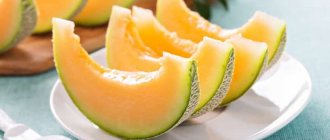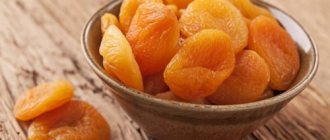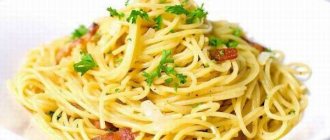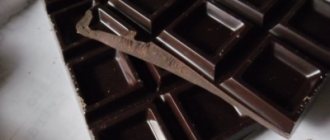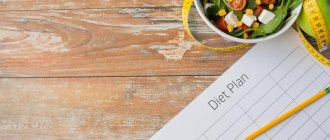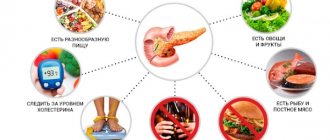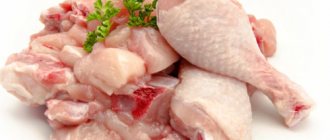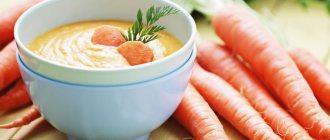You can eat broccoli for pancreatitis in the chronic form of the disease, as well as from 4 days after the onset of exacerbation of the disease. This dietary natural product contains a small amount of calories, it is low in fat and high in fiber, which makes it healing for inflammation of the pancreas.
Broccoli is low in fat and high in fiber, which makes it beneficial for inflammation of the pancreas.
Features of the disease
Without a diet, it is quite difficult to get rid of the disease. You may encounter complications. The pancreas, in the process of its natural functioning, secretes digestive juice, which is necessary for the functioning of many organs. Juice provides the following processes:
- Processes food in a special way.
- Makes products more digestible.
- Complex substances enter the blood faster.
- Processed food produces nutrients in the intestines that are required for cell health and regeneration.
- Lipocaine and insulin are produced, which protect organs from obesity and normalize carbohydrate metabolism.
The main reasons for the development of pathology are alcohol abuse, fatty and fried foods. If you do not follow nutritional rules, you may encounter such unfavorable factors as:
- Serious disruption of digestive processes.
- By increasing the amount of acid produced, the overall acidic environment in the intestines is disrupted.
- The patient begins to suffer from burning and cramping in the abdominal area.
- Digestive enzymes accumulate in the organ. And they violate the integrity of tissues.
- General metabolic processes in the body are disrupted. Due to this, a large amount of toxins accumulates.
- The process of insulin production is disrupted, which automatically causes the development of diabetes.
If a person develops pancreatitis, the gland becomes inflamed. She copes much worse with her tasks. This has a detrimental effect on the entire body.
How to eat properly?
It is worth studying the question of how to eat properly with pancreatitis. To quickly restore the body and get rid of unpleasant symptoms, you must follow the following rules:
- It is important to start the day with a glass of water or rosehip infusion.
- It is important to exclude excessively hot and cold foods.
- The amount of required proteins, fats and carbohydrates must be balanced.
- It is important to consume 80 grams of fat per day. You need to take it from butter.
- Protein should be about 160 grams.
- In order for the gland to function normally and not cause discomfort, 5 meals a day are recommended.
- Fried foods should be avoided to prevent active secretion.
- If a patient has an increased risk of developing diabetes mellitus, sucrose should be excluded from the menu. It can be replaced with honey or fructose.
The manifestations of pancreatitis can only be eliminated through diet. During an exacerbation, the amount of food should be minimal and it should be monotonous. As you recover, you can add permitted foods to diversify your diet.
What can you eat if you have chronic pancreatitis?
This form of pathology does not require special treatment, but it cannot be avoided without following a diet. Dishes made from the following products should be present:
- Boiled meat with a minimum amount of fat;
- Rice;
- Sour cream and low-fat cottage cheese;
- Vegetables baked or steamed;
- Vegetable oil.
The bulk of the menu is based on salads. They are served with properly cooked fish and dietary meat.
What should you give up?
Such things as fatty foods, alcohol, and nicotine can finish off the gland. It is prohibited to consume such products as:
- Fatty fish and meat;
- Rich broths and soups;
- All types of fast food;
- Various smoked meats and lard;
- Canned food;
- Fried and spicy;
- Cakes, pastries, pastries;
- Fresh bread;
- Coffee, tea and lemonade;
- Sausages of all varieties, sausages and frankfurters;
- Fat cheeses.
These products are categorized as difficult to digest. Even a healthy person should not get carried away with them, not to mention those with health problems.
Dairy and fermented milk flavored products
This category of products must be treated with great care. It is strictly prohibited to use them during an exacerbation period. And in the chronic stage, with caution and in minimal quantities. There are several reasons for this:
- Yogurts contain many preservatives;
- There are no useful substances in ice cream, only fats, palm oil and dry cream;
- Curds and cheesecakes are prepared using chemically processed products.
These products will not bring any benefit to the body. They can only damage the mucous membrane.
cucumbers
This is a very healthy and easy to prepare product. It is indispensable for pancreatitis. You need to prepare a salad from cucumbers. You need to take two or three peeled cucumbers and cut them into rings. Dress the salad with a small amount of salt, vegetable oil or low-fat sour cream. All this is sprinkled with chopped dill.
It is not advisable to use the product during an exacerbation. Salad should be present in the diet only during a period of stable remission and strictly with the permission of a doctor.
Tomatoes
The usefulness of tomatoes for this disease is controversial.
The product contains a large amount of fiber. This has a positive effect on the functioning of the pancreas and removes excess cholesterol from the body. But to achieve similar results, it is important to eat only fresh vegetables. Ripe tomatoes can be eaten in limited quantities and preferably as juice. It promotes the production of bile juice. This is very useful during remission, but can be harmful during exacerbation. If you eat unripe fruits, you may experience the exact opposite effect. These tomatoes contain many toxic components.
Protein food
Protein is the main building material that is beneficial for the whole body. It is necessary for the normal functioning of the gland. During remission, you are allowed to eat many foods. Here are the most useful of them in terms of degree of absorption:
- Eggs – 97%.
- Milk and products made from it – 95%.
- Fish – 90%.
- Dietary lean meat – 80%.
- Beans – 60%.
When eating eggs, you should remove the yolk from them. You should not drink milk in its pure form. It is advisable to include it in the diet as part of other dishes - porridge, omelettes. Allowed meat products include chicken, veal, and turkey. They contain sodium and selenium. They help convert carbohydrates into energy.
It is recommended to eat different types of fish. Preference should be given to cod, pike, pike perch and navaga. It contains the largest amount of phosphorus and beneficial vitamin B12. It is important to consume beans as thoroughly cooked porridges.
What should be present in the diet?
To quickly restore health, it is important to consume the following foods daily:
- Beet. There are many flavonoids, fiber, nicotinic acid and other useful elements present here. Thanks to this, the product quickly removes inflammation and stimulates the production of bile juice. The vegetable removes fluid and bad cholesterol from the body;
- Magnesium-rich melon and pumpkin;
- Cauliflower fights accumulated carcinogens and toxins. The product protects against cancer at the same time as broccoli;
- All types of greens. It contains a lot of phosphorus, iron and selenium, which are essential for the body. Greens eliminate the taste of bitterness and relieve pain in the pancreas.
It is worth eating apples every day. They are rich in iron and magnesium. The product is able to provide a general strengthening effect.
Is it possible to eat broccoli if you have pancreatitis?
You can and should eat broccoli if you have pancreatitis, but it is strongly recommended to follow the rules of consumption. The vegetable is indispensable for chronic forms. If there is an exacerbation of the disease, it is recommended to wait about 4-5 days, remove it and then start using the product.
Many experts advise eating broccoli regularly. The reason is the low calorie content of the product. Cabbage has a minimal amount of fat and a lot of fiber. This is what makes broccoli beneficial for pancreatic inflammation.
Daily intake of broccoli
The maximum allowable serving of broccoli per day for patients with chronic pancreatitis:
- In the acute phase - approximately 200 g (if product tolerance is adequate);
- Sustained remission phase – approximately 200 g.
Broccoli contains:
- Proteins – 2.82 g;
- Fats – 0.37 g;
- Carbohydrates – 6.64 g;
- Kcal per 100 g – 34.
Assessment of compliance with the dietary diet for chronic pancreatitis – 10.0. Vitamins that broccoli contains: B4, B9, E, C, K, B6, B1, B2, PP, beta-carotene.
Beneficial properties of green vegetables
Cabbage contains many useful components. For this reason, the answer to the question of whether you can eat broccoli for pancreatitis is positive. There is water, microelements, vitamins and fiber. There are vitamins C, E, A, K, PP and group B. There are also microelements essential for the body. What is most important is that there is much more vitamin C here than citrus fruits. The product is characterized by the following beneficial properties:
- Cleansing the intestines due to the fiber contained in it.
- Normalization of digestion.
- Helps in the production of bile juice.
- Strengthening the retina.
- Sugar regulation.
The benefits of broccoli have been proven in the fight against tumors. The young stems of the plant contain a unique substance – sulforaphane. Its feature is the prevention of the development of pathological cells.
The benefits of cauliflower and broccoli for the body
Cabbage inflorescences contain a huge amount of vitamins and microelements necessary for the normal functioning of the body. The range of its therapeutic action is wide. Thus, it has a detoxification (due to the content of vitamin U), anti-cholesterol, anti-inflammatory effects, normalizes the functioning of the digestive system (fiber reduces the frequency of constipation, vitamin U stabilizes the acidity level of gastric juice, glucarafin reduces the risk of developing gastritis, ulcers and cholecystitis), prevents the growth of cancer cells , especially the large intestine, mammary and prostate glands (through the conversion of glucosinolates into isothiocyanates), normalizes the functioning of the cardiovascular system (due to the content of potassium and coenzyme Q10), prevents the risk of developing birth defects (folic acid and B vitamins in large quantities are essential during bearing a child), resists obesity (tartronic acid prevents fat deposition). Due to its ease of digestibility, the vegetable is also included in the dietary menu and is indicated for infants and the elderly.
Compared to cabbage, this plant contains much more protein (1.5–2 times) and ascorbic acid (2–3 times). There is 2 times more iron than in peppers, green peas and lettuce.
Broccoli is a type of cauliflower that is distinguished by its color, less fussiness in the growing process and an even higher content of nutrients. In addition to the above properties inherent in broccoli, this vegetable has anti-atherosclerotic (due to the content of omega 3 fatty acids), anti-allergic (kaempferol), antioxidant (carotenoids and even more vitamin C) effects. It is indicated for eye diseases (cataracts) and vitamin D deficiency.
Features of use
How and in what quantity to consume broccoli for pancreatitis depends on the stage of development of the pathology. During an exacerbation, the product should be administered only after potatoes and pumpkin. The vegetable should be eaten as a puree and without salt. But even in this form, cabbage should not be consumed every day. If there is discomfort in the intestines - colic, bloating, nausea - the product will need to be completely excluded from the menu. In the chronic stage, the product can be consumed in different preparations:
- Baked in the oven;
- Cooked in a steamer;
- Stewed;
- Boiled.
You can prepare puree soup, soufflé and casseroles. At this stage, broccoli is combined with other products and a small amount of salt is added.
If the patient has pancreatitis and cholecystitis, the vegetable should be boiled, stewed or steamed. It is not advisable to salt dishes. It is also important to maintain the temperature of the cooked food. It should not be higher than 40 degrees.
Eating vegetables during remission
During remission, cabbage will allow the patient to saturate his body with useful substances and vitamins.
If the body is weakened, then it will quickly restore strength.
If consumed regularly, it will reduce the likelihood of cancer and atherosclerosis.
Sulforaphane, contained in broccoli, has a positive effect on the pancreas. Namely, it soothes and relieves inflammation.
During the period of remission of the disease, the patient must exclude spicy, fried or pickled cabbage from his diet. Pickled or fermented products greatly increase the acidity of the stomach, which can lead to a deterioration in well-being.
It is best to eat stewed, steamed or boiled cabbage. To preserve all useful elements during heat treatment, it must be cooked for no more than 2 minutes. And to preserve the rich green color of the vegetable, after cooking it is best to place it in cold water.
Broccoli is perfect for restoring a damaged pancreas due to the fact that it contains 2 times more protein components than other types of cabbage. Thanks to its chlorophyll content, it helps strengthen all cell membranes (even the pancreas), which allows cells to resist the destructive abilities of pancreatitis.
A stable period of remission makes it possible to diversify the culinary processing of cabbage and expand the list of prepared dishes. Cabbage can be stewed, eaten raw, baked, made into salads, closed and open pies. With constant use of broccoli, you can obtain numerous medicinal properties, as it:
- Does not have high calorie content;
- It is considered an excellent plant-based supplier of natural calcium, which is so necessary for teeth and bones;
- Stops the accumulation of cholesterol (thanks to lipolytic components - methionine and choline);
- Normalizes hematopoiesis and immune forces (the influence of chlorophyll);
- Frees you from toxic substances and toxins (thanks to soluble fiber);
- Protects against cancer (due to anetol trithione, synergin, sulforaphene and indole 3-carbitol);
- Stops depressive states (action of serotonin);
- Has antioxidant activity.
In addition, by consuming 100 g of broccoli, patients receive 99% of the daily requirement of ascorbic acid and 85% of the required vitamin K.
Cabbage for acute pancreatitis
In case of exacerbation, the product should be used very carefully. Due to the fiber, the vegetable can cause colic. If broccoli is relatively well tolerated, the vegetable must be present on the menu. This will relieve inflammation much faster. This positive result is achieved due to nutritional properties:
- Availability of high-quality proteins of plant origin. They are indispensable for restoring the functioning of the gland. This variety of cabbage contains much more such proteins than regular cabbage;
- Contains chlorophyll. This substance strengthens cell membranes. They become more resistant to the destructive effects of pancreatic enzymes.
You can check your tolerance by introducing other dietary vegetables into your diet. If the body copes well with pumpkin and potatoes, then it will digest broccoli well. If a person does not have bloating or stomach pain, cabbage can be used to make stews, soups, purees and puddings. There are quite a lot of options for preparing the product.
When should you exclude a vegetable from your diet?
In some cases, broccoli can lead to colic, bloating and other unpleasant symptoms. In this case, it would be best to stop using it until the rehabilitation period begins.
It will be more favorable if you start consuming it after other products, and not in the initial stages. It is recommended to consume no more than 200 grams per day, during any phases of the disease.
There are cases when a patient has an intolerance to this vegetable. In this situation, it is recommended to completely stop eating and switch to other “dietary” vegetables. These vegetables include:
- pumpkin;
- potato;
- carrot.
How to cook broccoli for pancreatitis?
The product for pancreatitis must be prepared correctly. When the pancreas is inflamed, it is important not to harm the body further. When deciding to include cabbage in your diet, you need to rely on the following rules:
- It is required to follow the doctor's recommendations;
- It is necessary to choose preparation methods that are approved for a certain stage of the disease;
- For cooking, you need to use light-colored heads of cabbage without any spots;
- To ensure that the product does not lose its beneficial properties during heat treatment, the inflorescences should be thrown into boiling water and cooked for no more than 15 minutes.
It is strongly not recommended to cook vegetables in aluminum or iron cookware. There is a risk of the product entering into a chemical reaction with metals.
Recipes for broccoli dishes for pancreatitis
There is no need to think that cabbage is consumed separately. You can cook a variety of delicious and healthy dishes. If, with the help of broccoli, the patient builds the right diet, the disease will quickly recede, and the overall quality of life will significantly improve. To reduce the frequency of exacerbations by half, so that complications do not develop, it is recommended to include the following dishes and products in the diet.
Cabbage and chicken soup
The dish is easy to prepare. You need to cook 500 grams of chicken breast. As soon as the broth boils, it needs to be drained and the meat rinsed under tap water. The product is again filled with water and brought to a boil again. At this stage you should throw into the broth:
- Broccoli – 6 inflorescences.
- Potatoes – 2 pcs.
- Carrots – 1 pc.
All this is cooked until done. Then salt is added to taste. Before whipping, it is worth adjusting the ratio of water and vegetables. It should be equal to 1:1. Twisted breast meat and sour cream are added to the finished puree.
Cabbage casserole
To prepare the casserole you need to follow these instructions:
- About 400 grams of cabbage must be boiled for 7 minutes in slightly salted water;
- Broccoli needs to be removed and dried;
- 120 grams of cheese are grated;
- You need to take 3 egg whites and beat them with 60 ml of milk;
- Broccoli is laid out on a baking sheet previously greased with butter;
- Everything is sprinkled with grated cheese on top and filled with milk mixture.
The dish is baked at 200 degrees for 15 minutes.
Carrot and Broccoli Casserole
Another healthy and tasty dish. It is prepared according to the following scheme:
- 300 grams of broccoli is boiled in water. After this, the product must be removed and crushed.
- Boil 20-30 grams of carrots and grate them.
- You need to beat 20 grams of sour cream and two egg whites.
- 10 grams of cheese are grated.
- The remaining yolks, carrots and cabbage need to be mixed.
- Proteins and sour cream are added to the mixture, and everything is mixed again.
- The resulting composition is poured onto a baking sheet.
- The mass is filled with ground breadcrumbs.
The dish is baked in the oven for 20 minutes at a temperature of about 200 degrees.
Omelette with cabbage
To prepare an omelet yourself, you need to follow these steps:
- 150 grams of cabbage should be washed and boiled in lightly salted water.
- The cabbage is removed from the water to dry.
- Beat two egg whites with 50 liters of milk.
- 15 grams of cheese are grated.
The cabbage is laid out on a baking sheet and poured with the prepared milk mixture. The dish is baked as usual.
Puree
Broccoli puree is very popular among chefs and among patients with pancreatitis. To prepare it, you need to take a few inflorescences and boil over low heat for 15 minutes. After cooking, the product must be mashed to a puree. To get a soft consistency, add a little water or 30 ml of milk. Before eating, add a little salt to the dish, cool to 40 degrees and eat.
Sample menu for the week
Strict adherence to the principles of proper nutrition is very helpful in the treatment of pancreatitis. The diet should not be interrupted or junk food added to the diet, as this can provoke an acute attack of the disease.
Table “Menu for every day”
| Days | Menu |
| 1st day | Breakfast: milk oatmeal, pieces of veal, tea or compote |
| 2nd breakfast: eggs (omelet or boiled), wheat broth (bran), baked fruit (apple, pear, banana - to choose from) | |
| Lunch: vegetable soup, noodles, chicken soufflé, jelly, tea | |
| Afternoon snack: cottage cheese, kefir, fermented baked milk (optional), tea | |
| Dinner: boiled pike, bread, tea | |
| 2nd day | Breakfast: boiled potatoes (mashed), a piece of fish, a few crackers, tea |
| 2nd breakfast: eggs, turkey cutlets, bread, compote | |
| Lunch: soup with chicken fillet, fish cutlet, bread, sour milk | |
| Afternoon snack: homemade berry jelly, jelly-like fruit broth, still water | |
| Dinner: carrot puree, cutlets, muesli, tea drink | |
| 3rd day | Breakfast: baked vegetables with chopped rice, beef liver, tea, steamed raisins |
| 2nd breakfast: vermicelli, beef soufflé, apricot puree, mineral water Lunch: broth (with vegetables), cod liver, bread, cookies, tea with honey | |
| Afternoon snack: jelly berry dishes, 2-3 pieces of watermelon or melon, compote | |
| Dinner: muesli, baked cottage cheese, jam, tea | |
| 4th day | Breakfast: liquid semolina, vegetable casserole, bread, fermented baked milk |
| 2nd breakfast: beef tongue, vegetable puree (broccoli, carrots), some marshmallows, tea | |
| Lunch: rabbit broth, steamed meatballs, shrimp, cookies, jelly | |
| Afternoon snack: mousse or jelly, baked apple (pear, banana) | |
| Dinner: oatmeal, chicken breast, mineral water | |
| 5th day | Breakfast: soft-boiled eggs, beef liver, apricot puree, tea with honey |
| 2nd breakfast: vegetable casserole, pasta, tomato juice, mineral water | |
| Lunch: rabbit soup, rabbit or turkey cutlets, baked zucchini, compote | |
| Afternoon snack: jelly, cookies, banana puree | |
| Dinner: mashed potatoes, boiled pollock, kefir | |
| 6th day | Breakfast: rice, chicken cutlets, cod liver, tomato juice |
| 2nd breakfast: muesli, beef tongue, baked pumpkin, rosehip infusion | |
| Lunch: vegetable soup, boiled fish, applesauce, mineral water | |
| Afternoon snacks cookies, jam, fermented baked milk, walnuts | |
| Dinner: chicken soufflé, oatmeal, bread, compote | |
| 7th day | Breakfast: vegetable stew, beef cutlets, bread, tea, honey |
| 2nd breakfast: rice, cod liver, tomato juice, peanuts | |
| Lunch: vegetable soup, fish fritters, cookies, bran broth | |
| Afternoon snack: cottage cheese, honey, tea | |
| Dinner: curdled milk, crackers, muesli, beef tongue |
Important! The size of the portions depends on the patient’s well-being. A person can increase or decrease their volume, as well as change some ingredients. The main thing is to consume exclusively healthy and approved foods for pancreatitis.
